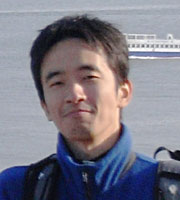I am conducting a mathematical study on a class of systems comprising quantum mechanical particles interacting with a quantum field. A quantum system consisting of electromagnetic fields interacting with electrons is an example of such a system. In quantum mechanical models of such systems, electrons are treated as quantum mechanical particles obeying the Schrödinger operator or the Dirac operator, and electromagnetic fields are described in terms of the quantum field theory. By analyzing these models, one can observe several phenomena: Bare electrons are unstable in vacuum. Under favorable conditions, the stable electron exists in which a cloud of photons surrounds the bare electron. Under the influence of the Coulomb potential, excited electrons are unstable, and they fall into a lower orbit.
Other models that I have studied include, for example, a system of nucleons interacting with a scalar field or a model that describes the dynamics of electrons moving within a conductor. Many interesting phenomena have been observed in the case of each model.
The common settings of my research for these models are the following: First, I define the Hilbert space of the system. Then, I define a self-adjoint operator (called Hamiltonian) corresponding to the energy of the system. All the phenomena stated above are analyzed on the basis of the properties of the spectrum of the Hamiltonian and are proved mathematically. One of the important characteristic states is the ground state. Information regarding the existence or nonexistence of the ground state in models is important many times. In general, however, the eigenvalue equation for the quantum field models cannot be solved explicitly. How to prove the existence of a solution to the eigenvalue equation or how to extract the properties of the eigenvector (if they exist) is the main subject of my research.
Profile

Itaru SASAKI
- Research Area:
- Analysis of Operators
- Keywords:
- Quantum field, Dirac operator, Schrödinger operator
Employment Experience:
Apr. 2006 – Mar. 2008 :
JSPS research fellow DC2 and PD
Department of Mathematics, Hokkaido University
Department of Mathematics, Hokkaido University
Jun. 2007 – May. 2008
:
Princeton University visiting fellow
Apr. 2008 – Mar. 2009 :
JSPS research fellow PD
Kyushu University
Kyushu University
Apr.2009 – :
Tenure-track Assistant Professor, International Young
Researchers Empowerment Center, Shinshu University
Researchers Empowerment Center, Shinshu University
Education:
Mar.2002:
B. S. in Physics, Gakushuin University
Mar.2004:
M. S. in Mathematics, Hokkaido University
Mar.2007:
D. S. in Mathematics, Hokkaido University
Selected Publications:
- I.Sasaki, Ground state energy of the polaron in the relativistic quantum electrodynamics, Journal of Mathematical Physics, 46, 102307 (2005).
- I.Sasaki, Ground state of the massless Nelson model in a non-Fock representation, Journal of Mathematical Physics, 46, 102107 (2005).
- I.Sasaki, Schrödinger operators with rapidly oscillating potentials, Integral Equations and Operator Theory, 58, No.4, 563-571 (2007).
- F. Hiroshima, I. Sasaki, Enhanced binding of an N-particle system interacting with a scalar bose field I, Mathematische Zeitschrift, 259, No. 3, 1432-1823 (2008).
- T. Chen, I. Sasaki, Boltzmann Limit and Quasifreeness for a Homogeneous Fermi Gas in a Weakly Disordered Random Medium, Journal of Statistical Physics, 132, No. 2, 329-353 (2008).